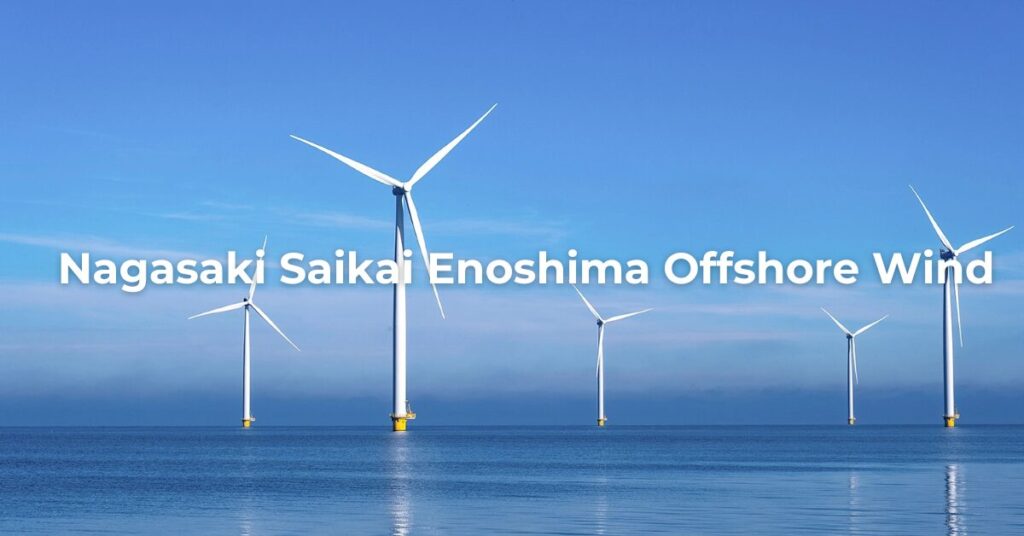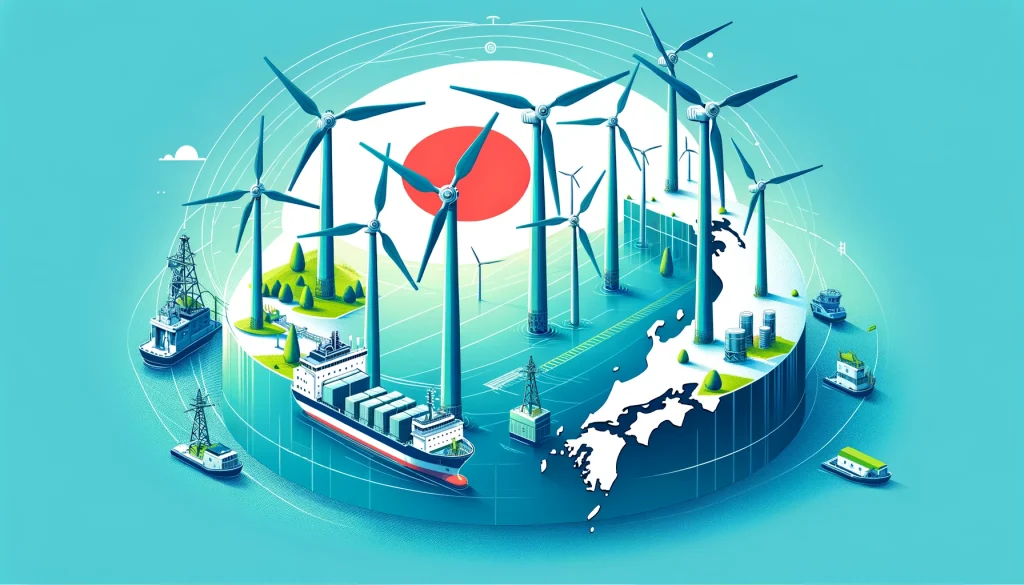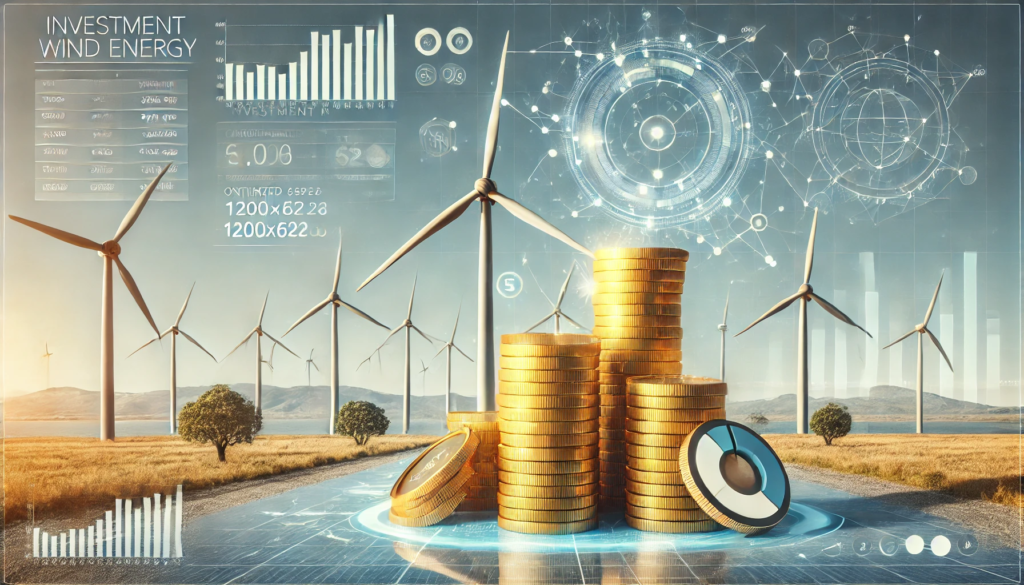Japan is accelerating the deployment of offshore wind power, and one of the most symbolic projects in this effort is the Nagasaki Saikai Enoshima Offshore Wind Project. This initiative is part of the Japanese government’s 2nd round of offshore wind power auctions—commonly known as “Round 2”—and represents a critical step toward achieving the national targets of 10 GW of offshore wind capacity by 2030 and 30–45 GW by 2040.
With a total planned capacity of 420 MW, the project will significantly contribute to the decarbonization of Japan’s energy mix through fixed-bottom offshore wind power. It is also expected to drive regional industrial development and economic revitalization. This article provides a detailed overview of the project, including its schedule, estimated CAPEX & OPEX and evaluation based on investment viability.
Project Overview
The Nagasaki Saikai Enoshima Offshore Wind Project is a fixed-bottom offshore wind farm, strategically positioned to leverage strong wind resources in the East China Sea. Developed under Japan’s public auction system, this project aligns with the government’s goal of expanding offshore wind energy as a core component of the country’s energy mix.
| Project name | Nagasaki Saikai Enoshima Offshore Wind |
| Developer | mirai enoshima LLC |
| stakeholders | Sumitomo Corporation TEPCO |
| Location | Offshore saikai enoshima, nagasaki Prefecture |
| Type | Fixed-bottom Offshore Wind Power |
| WTG | vestas |
| Price | 22.18 JPY/ kWh |
| Capacity | 420 MW (15 MW × 28 turbines) |
| Start of Construction | november 2027 |
| Operation Period | august 2029 – February 2055 |
Location
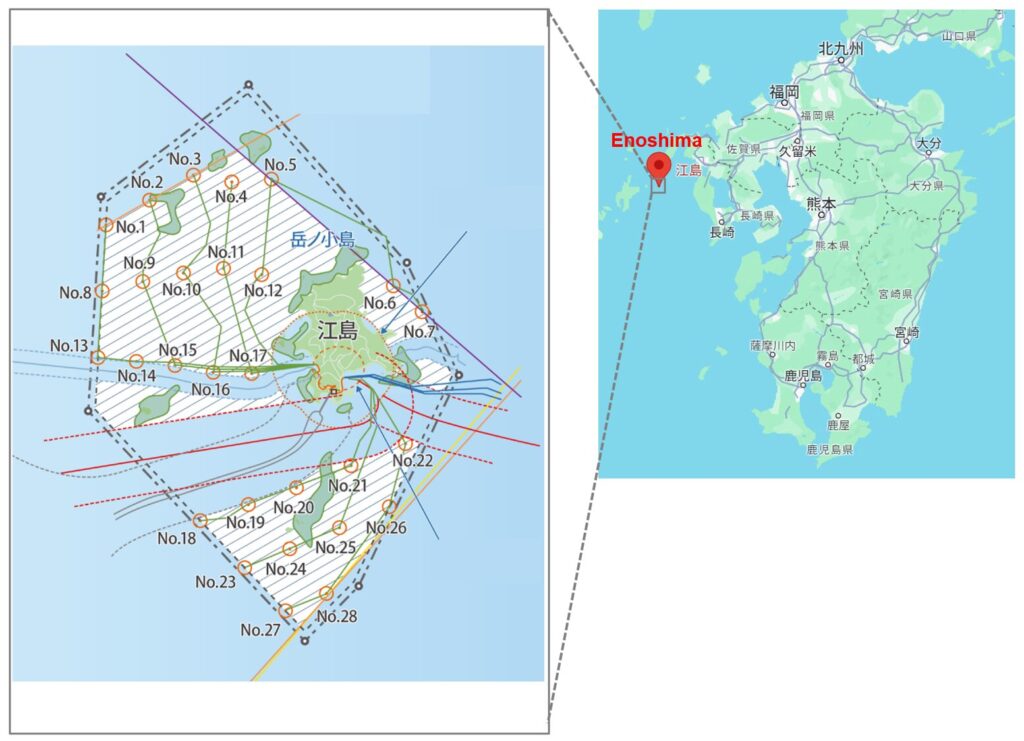
Consortium Members
Sumitomo Corporation
- Proven track record in the development and operation of offshore wind projects in Europe, with a total of 1.9 GW currently in operation or under construction.
TEPCO Renewable Power
- A subsidiary of Japan’s largest electric utility, with extensive experience across hydropower, wind, and solar, maintaining a total installed capacity of approximately 10 GW.
Project Implementation Structure
Construction Phase
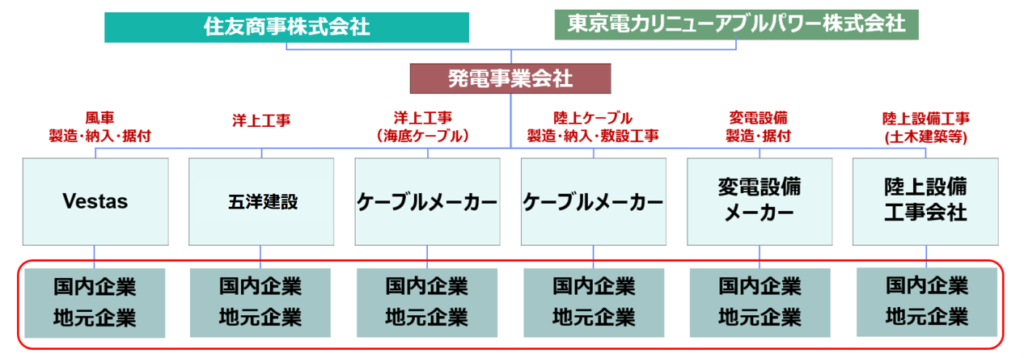
Operation Phase
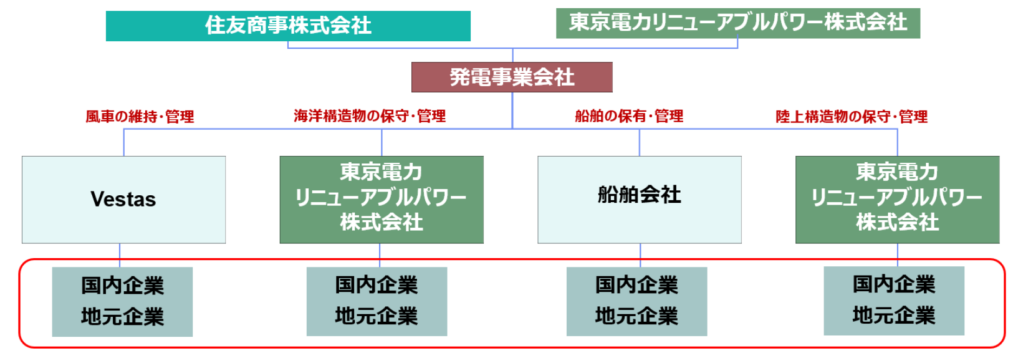
Project Schedule
Development & Design Phase (2024–2025)
- March 2024: Award of public auction
- Environmental impact assessment, wind, wave, and seabed geological surveys
- Local stakeholder consultations and coordination
- Wind farm certification and submission of construction plan
Construction Phase (2025–2029)
- January 2025: Construction of onshore substation and transmission infrastructure
- October 2027: Installation of offshore foundations and cables
- January 2029: Assembly and installation of wind turbines
Operation & Maintenance Phase (2029–2054)
- Turbine maintenance: Vestas
- Operation management (BOP): TEPCO Renewable Power
Decommissioning & Repowering Phase (Post-2054)
- Decommissioning plan at end of wind farm’s service life
- Potential repowering depending on future energy policy
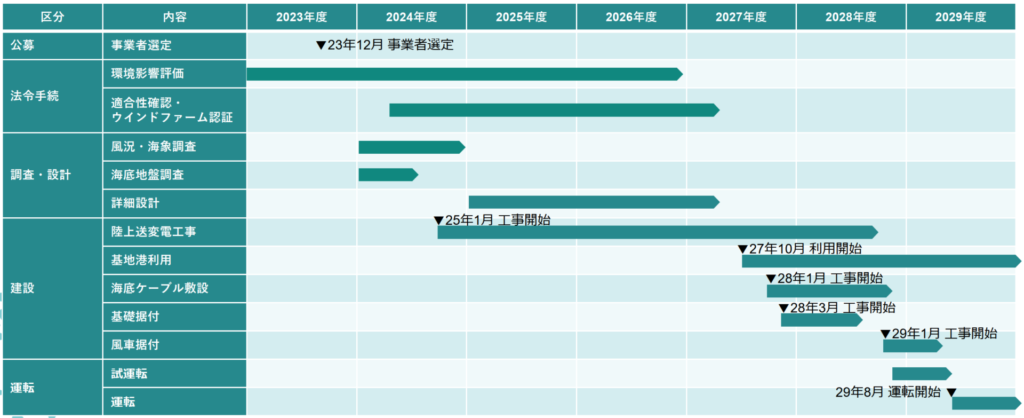
Source: Public document by the Agency for Natural Resources and Energy, METI
CAPEX & OPEX Estimates
Capital expenditures (CAPEX) and operational expenditures (OPEX) were estimated with reference to NEDO’s offshore wind cost model as of October 2024.
The estimated capital expenditure (CAPEX) for the Nagasaki Saikai Enoshima Offshore Wind Project is approx. ¥173 billion, with long-term operational costs (OPEX) projected at approx. ¥3.0 billion annually.
📌 CAPEX Breakdown for 420 MW:
| Investment Factor | Estimated Cost (Billion JPY) |
|---|---|
| Turbine Procurement | 95 |
| Foundation & Installation | 66 |
| Substations & Grid Connection | 12 |
| Total | 173 |
Evaluation based on investment viability
We estimated the annual energy production (AEP) using estimated power curves and wind condition data from NEDO’s NeoWins. And we calculated IRR (internal rate of return) and LCOE (levelized cost of energy), which are commonly used indicators for investment evaluation. In addition, we evaluated the competitiveness based on investment viability by using our original evaluation criteria. The following assumptions were applied:
- WACC (weighted average cost of capital): 6.5%
- Operational period of the wind farm: 25 years
- Power selling price: ¥22.18/kWh
| Promotion Zone | Rated Power | Gross Capacity Factor | Net Capacity Factor (with loss) | AEP (kWh) | CAPEX (¥ billion) | OPEX (¥ billion) | IRR (%) | LCOE (¥/kWh) |
|---|---|---|---|---|---|---|---|---|
| 420MW Nagasaki Saikai Enoshima Offshore Wind Project | 15 MW | 36.93% | 29.54% | 1086982848 | 173 | 3 | 11.40 | 15.8 |
Evaluation Criteria
| Rating | IRR | LCOE | Comments |
|---|---|---|---|
| ★★★★★ Very Promising | ≥ 9.5 % | ≤ 15 ¥/kWh | Both investment viability and power generation efficiency are exceptionally high. A zone that should be given top priority. |
| ☆☆☆☆ Promising | 8–9.5 % | 15–17 ¥/kWh | High investment potential; profitability is achievable depending on other factors such as port and grid infrastructure. |
| ☆☆☆ Neutral | 6.5–8 % | 17–19 ¥/kWh | Potentially viable depending on conditions. Cost reductions and support measures will be key. |
| ☆☆ Challenging | 5–6.5 % | 19–22 ¥/kWh | Profitability is somewhat low and would require technical and regulatory support as a prerequisite. |
| ☆ Unprofitable | < 5 % | > 22 ¥/kWh | Currently challenging. Fundamental regulatory support or technological innovation is necessary. |
Evaluation Result
| Promotion Zone | Rating |
|---|---|
| 420MW Nagasaki Saikai Enoshima Offshore Wind Project | ☆☆☆☆ Promising |
Summary
Nagasaki Saikai Enoshima Offshore Wind Project represents a significant milestone in Japan’s push for renewable energy. According to the analysis for competitiveness based on investment viability by J-WIND Times, the evaluation result is “Promising”. High investment potential, profitability is achievable.
📚 Want to dive deeper? Explore J-WIND Times’ featured categories!
🔍 Market Trends & Analysis – Stay ahead with insights into the latest developments shaping renewable energy investments.
🏛 Policy & Regulation – From auction schemes to FIP reform, get a clear understanding of Japan’s evolving energy rules.
⚙️ Projects – Discover the progress and behind-the-scenes of offshore wind projects across Japan.
💡 Technology & Innovation – From next-gen turbines to floating foundations, explore the cutting edge of offshore wind tech.

